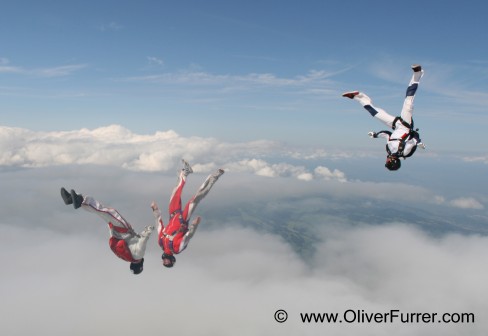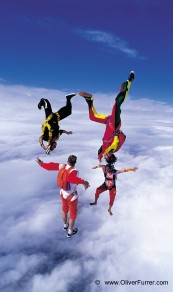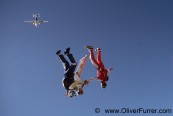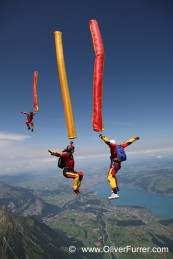freefly:
FreeFlying is the fastest growing and most innovative area of the sport. It evolved from a desire to have fun through exploring the almost limitless ways to fly your body in freefall.
FreeFlying started in the early 90s with a small group of guys who were looking for a new direction in human flight.
The nature of FreeFly is fast paced and dynamic. This leads to an increased level of safety awareness and willingness to share knowledge within a really friendly and enthusiastic bunch of people. This environment is enhanced by a progression system that encourages the individual to experiment and learn in their own way – hence the variety in styles and flying techniques.
Most FreeFlyers start out learning how to fly head-up, in a sit-fly position, so called because is similar to the position for sitting in a chair. This position can be manoeuvred around the sky in three dimensions. The great thing about sit-flying is that it is reasonably easy to become proficient, by taking FreeFly coaching. It is the sort of thing that, once you get the feeling, you never lose it.
Head-down, as the name suggests, you fly upside-down, using your legs to provide balance and support in the same way a shuttlecock falls. By deflecting the passing air in different ways it is possible to get fast and slower, with the potential to cover great distances forwards and backwards horizontally. Head-down is the most aerodynamic way for the human body to fly.
You can combine head-down with head-up and mix it all up with people who inevitable develop their own styles and techniques in the air. Hybrid dives involve people “flat flying” too. It is hard to imagine the possibilities, and goes! Atmonauti, another approach is to fly at an angle of about 30° to the horizon, give a similar feel to head-down but with slower fall rate. Tracking dives are becoming a popular way to end the day.








